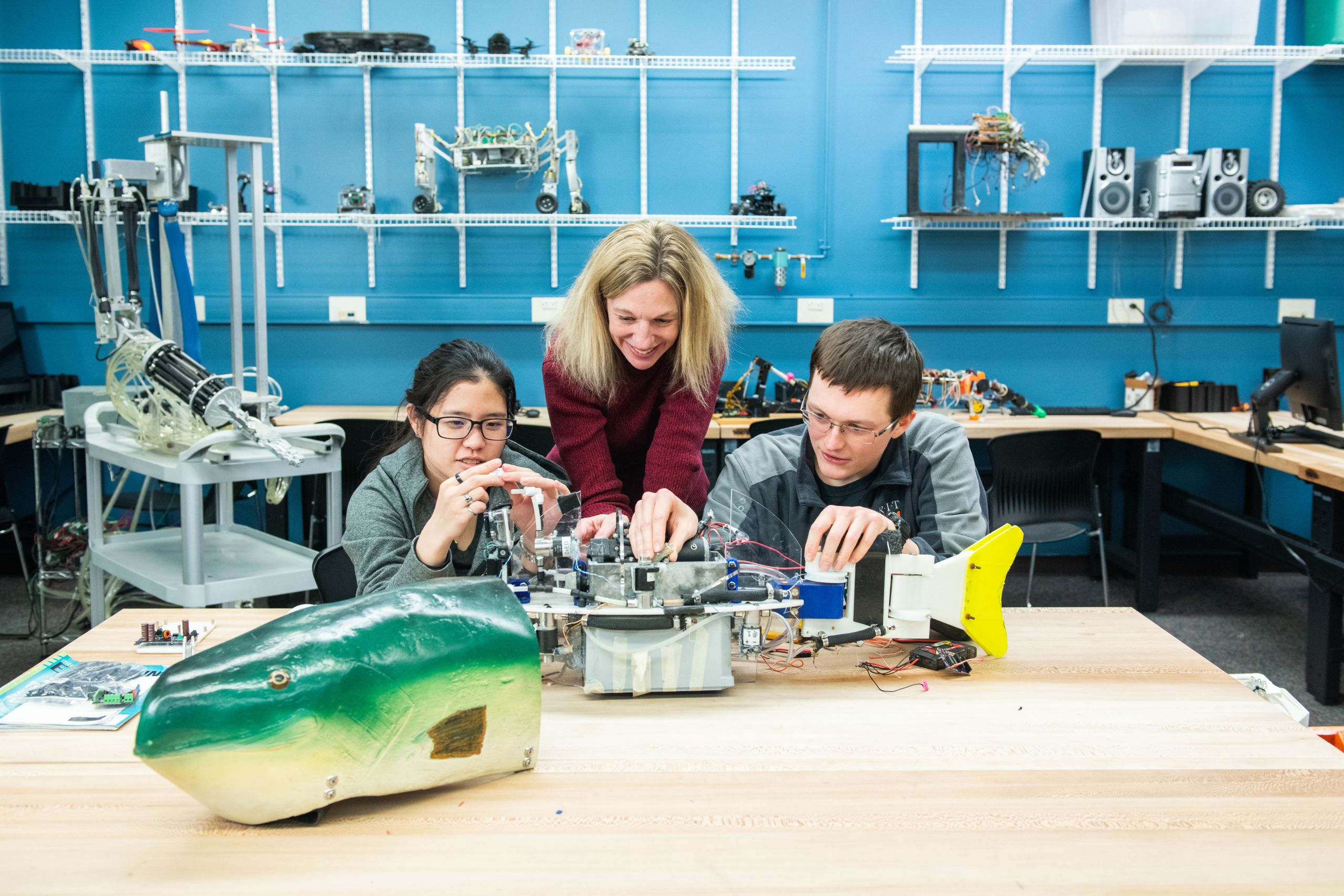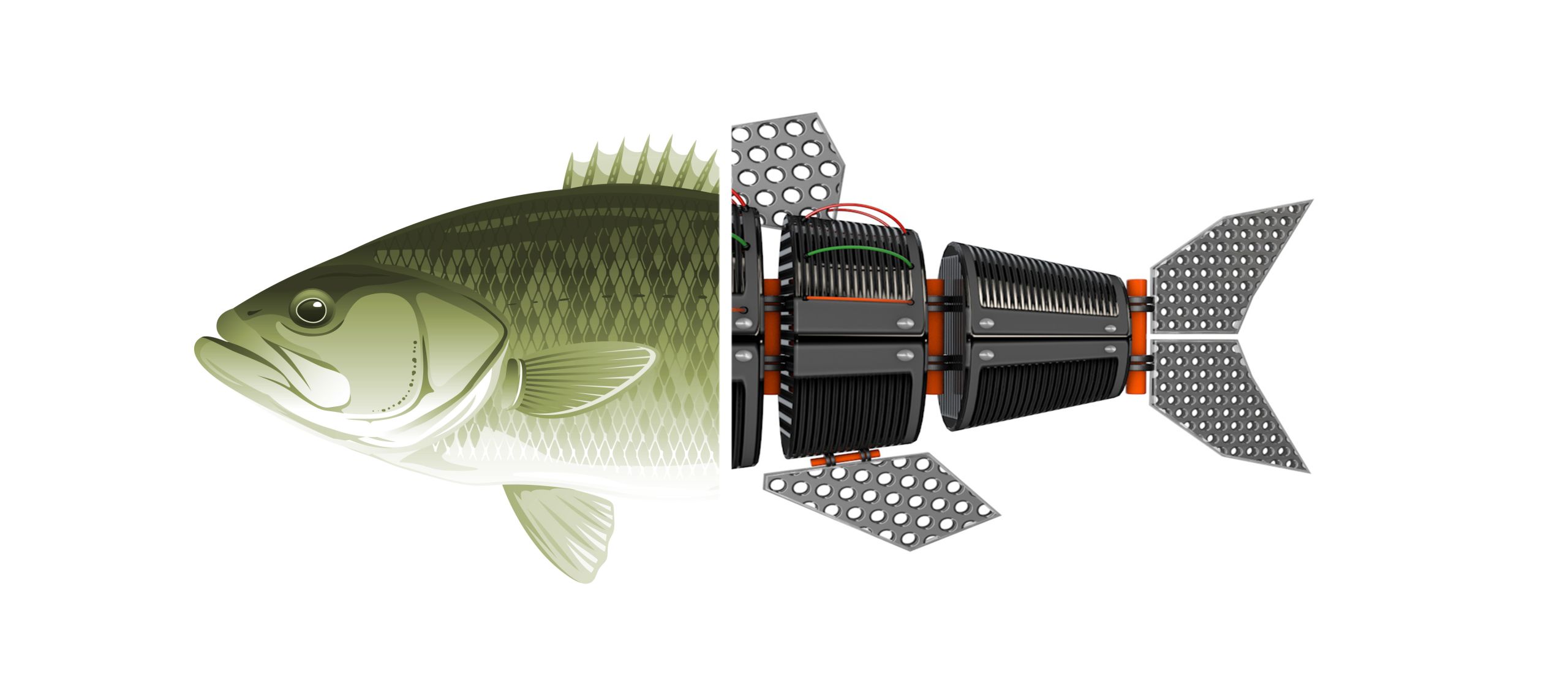Nature's brilliance. RIT's ingenuity.

A bat navigating in the dark. A tiger tracking its prey. The migration of a flutter of butterflies.
It’s no surprise that nature is the ultimate innovator.
We live in a world where we are surrounded by profound examples of solutions to countless problems. Whether it’s a matter of effective locomotion, creative environmental adaptation, or an elegant survival mechanism, nature has it figured out.
So when Kathleen Lamkin-Kennard, associate professor of mechanical engineering, was looking for a fun senior design project to give to her engineering students, inspiration struck. She would have them design a robotic creature that moves as sinuously as a real fish.
While seemingly whimsical, it is serious science where flexible muscles designed today could be part of better functioning assistive technologies for people tomorrow.
“The soft, stretchy muscle actuators (artificial muscles) are lightweight and present an interesting design challenge."
Despite some puzzled looks initially, Lamkin-Kennard’s students threw themselves and their efforts into the work.
Of course, making a robotic fish means researching and studying how real fish move. Students began collecting observations of the short, powerful—yet simple—muscle movements of the common river trout.
Lamkin-Kennard’s students learned to understand motion and to replicate it through technology that might mean mobility for individuals who may not have had that option before.
“There is a big push in the robotics field for taking inspiration from nature. There are some very efficient designs in nature and in the bodies of animals that are just so spectacular. How can we use that?” said Lamkin-Kennard, whose menagerie of robotic animals now includes an ant, otter, trout-like fish, and multi-leg crab—all built using flexible actuators and sensor technology.
Lamkin-Kennard’s work builds on her experience in industry, where she helped to develop a high-fidelity robotic patient simulator device. She used that experience to create unconventional senior design projects, starting with a robotic hand in response to increased interest in prosthetics and wearable technologies.
That early work proved soft muscle actuators could be used for different types of motion. New projects evolved into robotic systems that walked, jumped, and swam.

Part fish. Part machine. All RIT.
Part fish. Part machine. All RIT.
Innovation Never Sleeps


Contemplate. Collaborate. Create
Contemplate. Collaborate. Create

Teaching to Make a Difference.
Teaching to Make a Difference.
Each project challenged the students to expand capabilities from movement on land to motion underwater, from increasing the number of sensors included in a design to ensuring that the mechanical systems were waterproof.
“We made these robotic creatures. But for me, it is really the end goal—how can we adapt this?” said Lamkin-Kennard, who continues to adapt this work, collaborating with peers in RIT’s assistive technology group, expanding techniques for exoskeletons and surgical robots, and using newer, stretchy elastomeric materials that are able to hold an electric charge. Using that charge, the material contracts, similar to the way human muscles do after receiving an electrical impulse from the brain.
RIT students are accustomed to exploring those special and unique places where disciplines merge. This approach is one that is intentionally fostered and consistently encouraged by the faculty at RIT. Where engineering meets biology and performance meets technology, that’s the area where RIT soars.
What if more assistive devices could be built with this technology?
“That’s what we are looking at long term,” said Lamkin-Kennard, whose research focuses on the use of computational and physical models to simulate integrated human physiological systems. Such technological discovery could lead to a new wave of prosthetics that can help those with disabilities regain fine motor skills and even mobility.
This is just one example of the exact type of experience that sets RIT students apart when it comes time to establish themselves in a career. Multidisciplinary exposure, innovative work with real-world applications, and an intrinsic sense of possibility. For engineering students in particular, multiple cooperative education experiences are a requirement. RIT believes in providing exposure early and often to a variety of career paths, industries, and environments.
Successful outcomes are one of RIT’s specialties, for our students and for the world.


